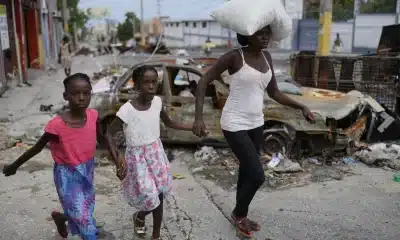News
Trudeau Puts Canada “Elbow Deep” into Helping Haiti
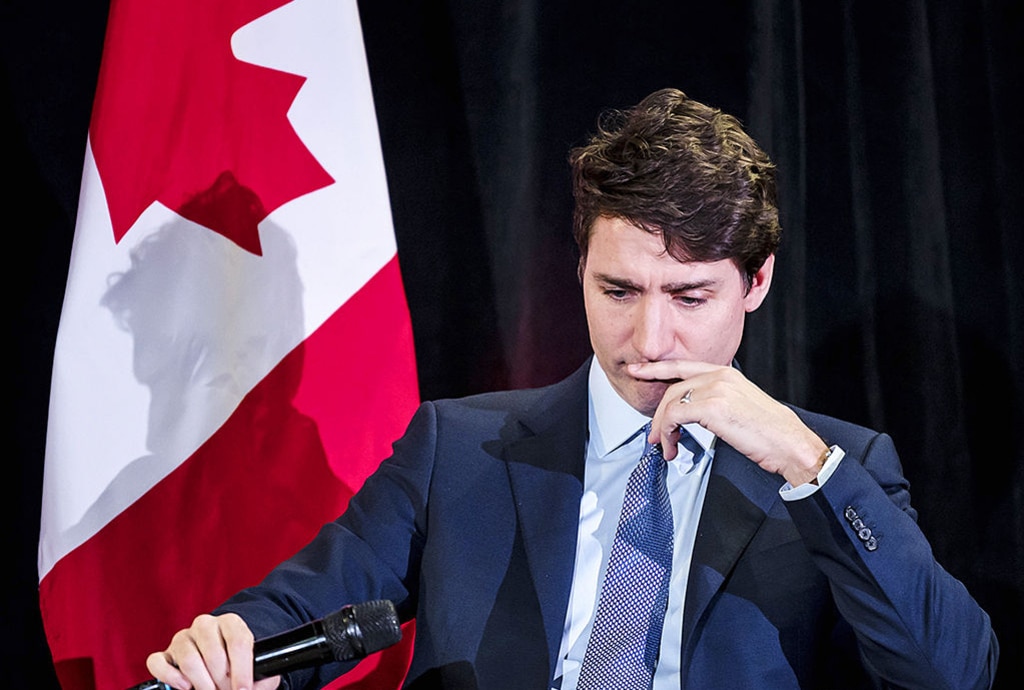
Canada’s Prime Minister Justin Trudeau avoided direct questions about whether Canada has been asked to lead a military intervention in Haiti. He stated that Canada’s response in Haiti is guided by lessons and “difficult experiences” from previous interventions and missions.
Canada is sticking to its plan to help Haiti by boosting its support for the Haitian National Police.
“Canada is elbow deep in attempting to assist,” Justin Trudeau said in Nassau, Bahamas. “The best thing we can do to assist is to allow Haitian leadership and the patient people to drive their path out of this crisis.”
According to Trudeau, Canada will send two navy vessels to the Haitian coast as part of a surveillance and intelligence operation.
The announcement is the latest in Canada’s piecemeal response, which falls short of acting Prime Minister Ariel Henry’s request for military intervention.
Trudeau stated that the navy vessels are deployed to deter gangs from using waterways as “an extra sphere of influence.” He added that they would not be present to intercept migrants.
“They are there to help the Haitian National Police control gang activity in Port-au-Prince and along the coast,” Trudeau told reporters after two days of meetings with Caribbean Community (CARICOM) leaders.
Haiti and climate change dominated the leaders’ agendas.
Along with the two Canadian coastal defense ships, Canada will airlift three MRAPS (mine-resistant light armored personnel carriers) purchased by the Haitian National Police to the country “in the coming days.”
The Canadian prime minister stated that his government’s priority is to intervene in an “atrocious situation” by strengthening Haiti’s National Police. “What is happening in Haiti is heartbreaking — and we must do everything we can to help.”
For months, the White House and the Canadian government have emphasized the importance of finding a Haitian-led solution to keep the country from devolving further into lawlessness.
According to State Department spokesperson Ned Price, discussions with Canada and other hemispheric partners, the Organization of American States, and the United Nations about what can bring stability and security to Haiti are ongoing.
A Haitian-led response has yet to emerge, and the country’s enduring intertwined humanitarian, political, and security crises risk further devastation.
Trudeau Imposes Sanctions
Canada has used sanctions to stifle financial flows to Haitian elites and gangs linked to violence in the country, a strategy that saw the addition of two names to a list of 17 sanctioned individuals last week.
Trudeau said on Thursday that Canadian-supplied Mine-Resistant Ambush Protected light tactical vehicles (MRAP) would arrive in Haiti “in the coming days” and that the government would deploy Navy vehicles off Haiti’s coast. He stopped short of proposing the kind of military force its de facto prime minister requested, as experts urge him to stop growing talk of foreign intervention.
Trudeau announced at a meeting of 20 Caribbean Community leaders that Canada would provide $12.3 million in new humanitarian aid to the crisis-stricken country and $10 million to the International Organization for Migration to assist migrants in the region.
Following surveillance flyovers earlier this year and an existing plan to send more armored vehicles, Trudeau promised to send Royal Canadian Navy vessels to the Haitian coast.
The HMCS Glace Bay and HMCS Moncton will be redeployed from West Africa, along with their 90 sailors, according to the Defence Department. They will conduct “presence patrols” in the waters surrounding Port-au-Prince.
Trudeau said this morning that he had a “constructive” conversation with Haitian de facto leader Ariel Henry, who is acting as the country’s prime minister but was not elected. Jody Thomas, Canada’s national security adviser, was present and taking notes, as were Bob Rae, Canada’s ambassador to the United Nations, and Sebastien Carriere, the country’s ambassador to Haiti.
During brief remarks to the media, he insisted to Trudeau, speaking in French, that the country must work toward transparent elections despite the deteriorating security situation.
Gang activity has slowed Haiti’s economy and hastened the spread of cholera. Last week, a United Nations report detailed “indiscriminate shootings, executions, and rapes.” The police have been unable to stop the widespread violence.
News
China Launches Long March-5 to the “Dark Side of Moon”

China has launched an unmanned spacecraft on a nearly two-month journey to gather rocks and soil from the moon’s far side, becoming the first country to undertake such an ambitious task.
China’s heaviest rocket, the Long March-5, lifted off at 5:27 p.m. Beijing time (0927 GMT) from the Wenchang Space Launch Center on the southern island of Hainan, carrying the Chang’e-6 probe weighing more than 8 metric tons.
China’s Chang’e-6 is entrusted with landing in the South Pole-Aitken Basin on the moon’s far side, which is continuously facing away from Earth, and retrieving and returning samples.
The launch is another significant milestone in China’s lunar and space exploration mission.
“It is a bit of a mystery to us how China has been able to develop such an ambitious and successful programme in such a short time,” said Pierre-Yves Meslin, a French researcher working on one of the Chang’e-6 mission’s scientific objectives.
In 2018, Chang’e-4 made China’s first unmanned moon landing on the far side. Chang’e-5 returned lunar samples for the first time in 44 years in 2020, and Chang’e-6 has the potential to make China the first country to retrieve samples from the moon’s “hidden” side.
Scientists, diplomats, and space agency officials from France, Italy, Pakistan, and the European Space Agency all attended the launch, which carried moon-study payloads on Chang’e-6.
However, no US groups requested for a payload place, according to Ge Ping, deputy director of the China National Space Administration’s (CNSA) Lunar Exploration and Space Program.
U.S. law prohibits China from collaborating with the United States’ space agency, NASA.
The Dark Side of the Moon
The far side of the moon, also known as the “dark side of the moon” despite receiving sunlight, is the hemisphere that always faces away from Earth. The Soviet Luna 3 spacecraft made the first observation of this strange region in 1959.
Unlike the near side, the far side lacks enormous, dark basins known as marias. Instead, hundreds of craters produced by asteroid collisions over billions of years blanket it.
The South Pole-Aitken Basin, an immense crater more than 1,500 miles wide and several miles deep, is one of the most visible landforms on the far side. This ancient impact basin is among the largest known crater formations in our solar system. The far side likewise has many mountains, ridges, and other harsh topography formed by cosmic collisions.
Studying the far side provides insights into the moon’s genesis and early history because it maintains impact records from the solar system’s turbulent childhood.
Scientists also intend to investigate it for potential resources and future lunar bases. With no atmosphere or magnetic field, the far side displays the wounds of endless meteor bombardments, exposing information about Earth’s only natural satellite that the near side lacks.
Source: Reuters
Apple Boss Tim Cook Makes Surprise China Visit
News
Canada’s RCMP Charge 3 Indian Men Over Sikh Leaders Murder
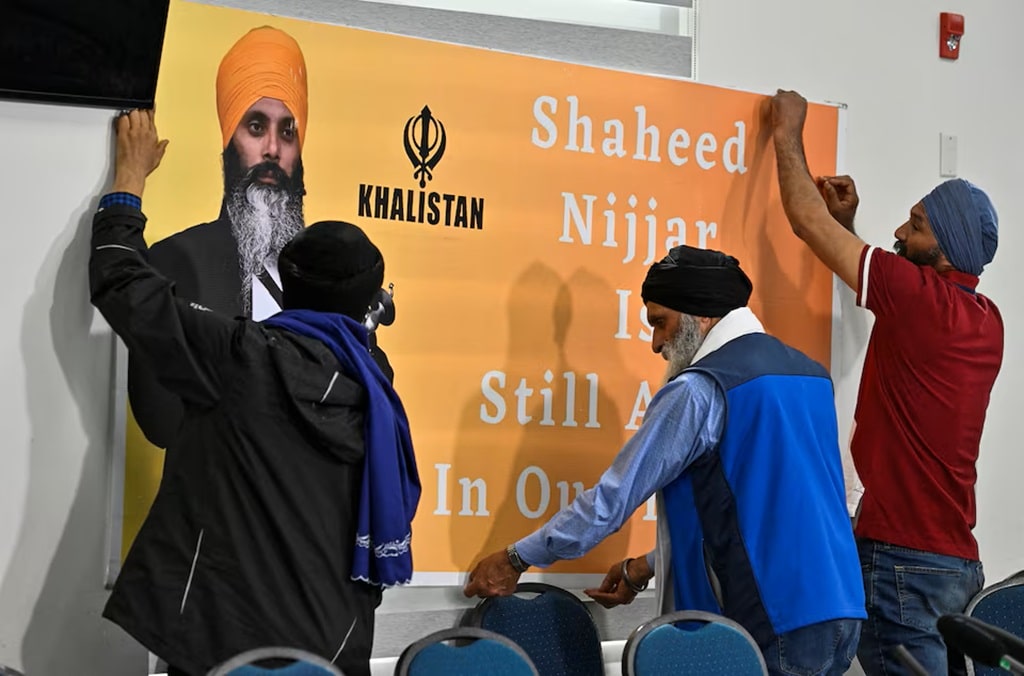
Canada’s Royal Canadian Mounted Police (RCMP) have charged three Indian men with the murder of Sikh separatist leader Hardeep Singh Nijjar last year, saying they were looking into whether the suspects had any ties to the Indian government.
Nijjar, 45, was killed in June outside a Sikh temple in Surrey, a Vancouver suburb with a sizable Sikh community. A few months later, Canadian Prime Minister Justin Trudeau alleged Indian government participation, sparking a diplomatic crisis with New Delhi.
The Royal Canadian Mounted Police identified the three individuals as Karanpreet Singh, 28, Kamalpreet Singh, 22, and Karan Brar, 22.
“We’re investigating their ties, if any, to the Indian government,” said Mandeep Mooker, an RCMP superintendent, during a televised press conference. The Indian mission in Ottawa did not reply to calls for comment from Reuters.
Nijjar was a Canadian citizen who campaigned for Khalistan, an autonomous Sikh country formed out of India.
The presence of Sikh separatist groups in Canada has long irritated New Delhi, which has dubbed Nijjar a “terrorist”.
Last Monday, the White House expressed worry over the apparent involvement of the Indian intelligence service in murder plans in Canada and the United States.
The RCMP claimed they coordinated with US law enforcement authorities, but did not provide any other information, and warned that more detentions might be forthcoming.
“The probe does not end here. We are aware that others may have been involved in this homicide, and we are committed to discovering and arresting each of these individuals,” said assistant RCMP commissioner David Teboul.
Canada-India Ties Strained
The three Indian nationals were arrested in Edmonton, Alberta, on Friday, according to police. They will arrive in British Columbia on Monday.
Trudeau revealed in September that Canadian officials were looking into accusations linking Indian government agents to the murder. New Delhi dismissed Trudeau’s allegation as ludicrous.
“We welcome the arrests, but this raises a lot of new questions,” said Balpreet Singh, legal counsel and spokeswoman for the Canada-based World Sikh Organization advocacy group.
“Those who have been arrested are part of a hit squad but it’s clear that they were directed,” he added in a telephone interview.
Canada had pressed India to participate with its probe. Last November, US authorities said that an Indian government officer orchestrated the plot to assassinate Gurpatwant Singh Pannun, a Sikh separatist and dual citizen of the United States and Canada.
“While today’s action… is a step forward, it only scratches the surface,” Pannun said in a statement, calling for action to “dismantle the networks that enable and perpetuate such crimes against Canadians on Canadian soil”.
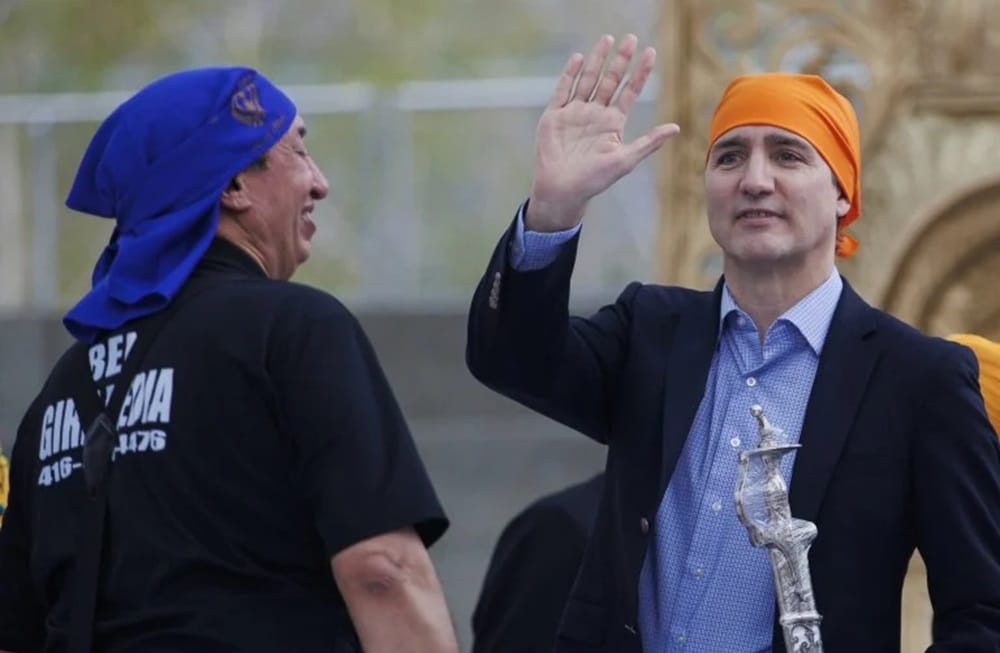
Trudeau’s Presence at Separatist Sikh Rally Enrages India: Getty Images
India Angered Over Trudeau
Meanwhile, analysts say Prime Minister Justin Trudeau‘s move shown “no appreciation of Indian concerns in Canada,” with the apparently ill-advised travel expected to discourage New Delhi from improving relations with Ottawa.
Relations between the two sides have deteriorated in recent months as a result of allegations by Trudeau’s administration that Indian intelligence agents were involved in the 2023 murder of Canadian citizen and Sikh separatist leader Hardeep Singh Nijjar.
Nijjar was involved in the 1980s and early 1990s Khalistan movement, which sought to establish an independent Sikh nation in northern India’s Punjab state. Today, the activists are largely from the Punjabi overseas diaspora, many of whom have migrated in the North American country. India has often complained to Canada about the actions of Sikh hardliners.
According to The Times of India, Indian intelligence officials were particularly concerned about the presence of “Modi Wanted” posters purportedly placed at the Toronto rally by the secessionist group Sikhs For Justice (SFJ) in retaliation to Nijjar’s murder.
While New Delhi has frequently criticized Trudeau for failing to rein in Khalistani separatists and engaging in “vote bank politics” with the Punjabi diaspora, experts disagreed on whether the government overreacted in order to acquire votes in the ongoing Indian elections.
World
Good News: The Worst Could Be Over For Gas Prices This Spring
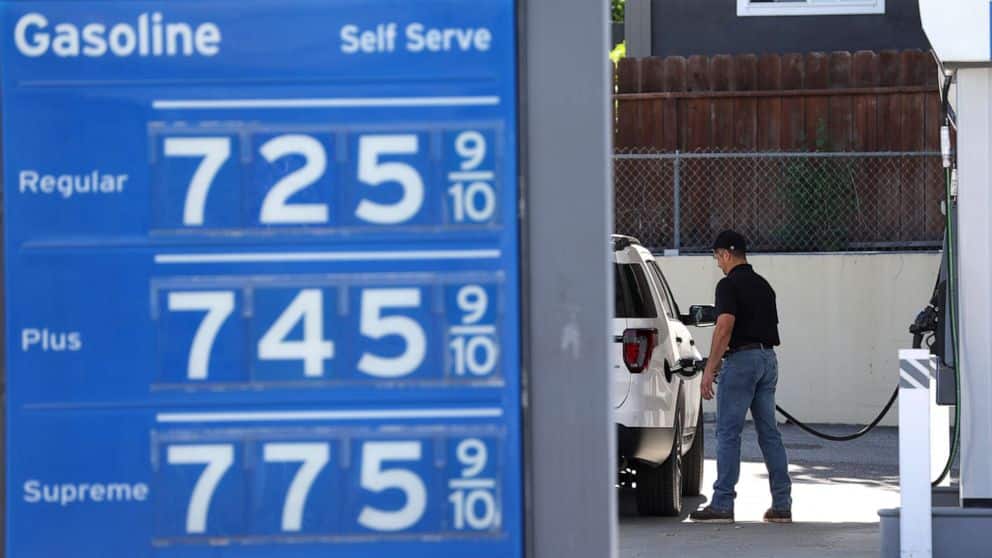
Israel and Iran have engaged in open conflict. Ukrainian drones have routinely targeted Russian oil refineries. And OPEC continues to restrict oil production.
These frightening occurrences sparked concerns about $4 gas, harming the US economy and exacerbating inflation.
However, this has not occurred, at least yet. Gas prices in the United States have stopped growing and dropped temporarily recently.
The national average was $3.66 per gallon on Monday, down from $3.68 a week ago, according to AAA.
There is growing anticipation that gas prices will peak in the spring, if not the entire year.
Patrick De Haan, head of petroleum analysis at GasBuddy, predicts that drivers will find relief at the pump in the coming weeks.
“I’m hoping the worst is behind us,” De Haan told CNN. Unless something drastic happens, there are increasing odds the national average has hit the projected spring peak.”
Tom Kloza, worldwide head of energy analysis at the Oil Price Information Service, believes gas prices will fall in the coming weeks.
“Most of the worries from the year’s first half have been resolved. “I think we’re safe until hurricane season,” Kloza remarked.
‘Could have been far worse.’
Of course, none of this implies that gas costs are cheap. They were lower in April 2021 and spring 2020, when Covid-19 kept many Americans off the roadways.
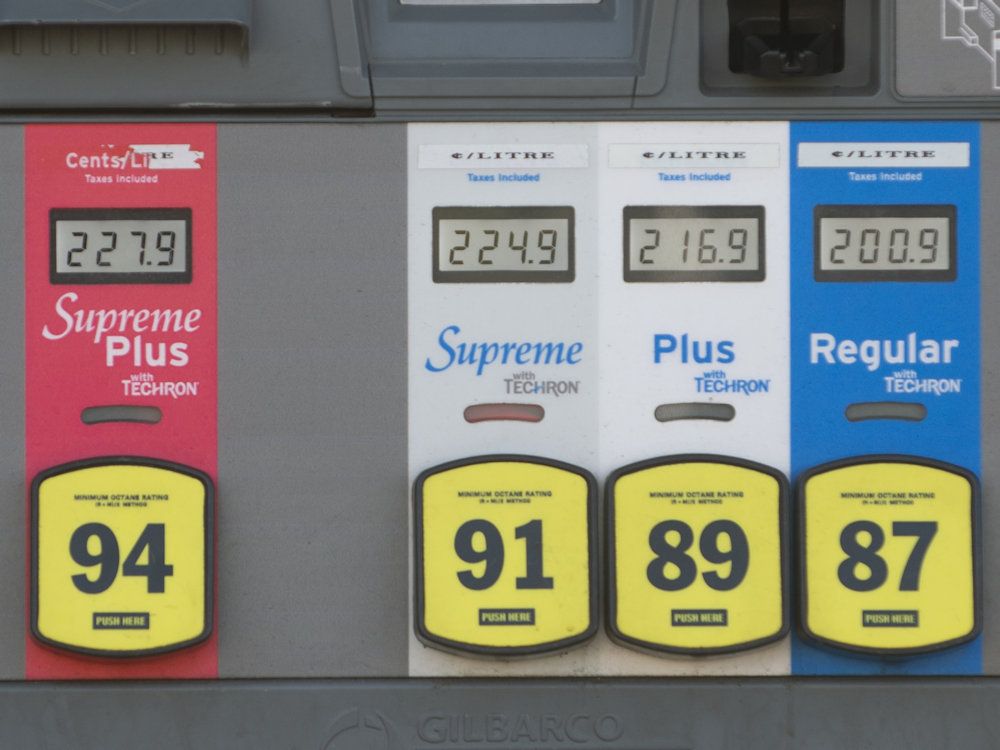
National – VOR News Image
The Worst Could Be Over For Gas Prices This Spring
Nonetheless, a springtime peak of less than $3.70 a gallon would be a win for consumers, considering the real risk of significantly higher gas costs.
“It could have been much worse,” said Andy Lipow, owner of the consultancy firm Lipow Oil Associates.
According to AAA, drivers in just seven US states pay $4 or more per gallon for gas. All those states are in the Western part of the country, followed by California, where the average is $5.40 per gallon, up from $4.88 last year.
The national average is nowhere near the record increase above $5 per gallon in June 2022.
“It seems evident that this will not be a record-setting year. “Filling your tank will feel much more normal this year,” said De Haan.
Economic and political ramifications.
Officials in Washington would most certainly breathe a sigh of relief.
Rising gasoline costs earlier this year led to lower-than-expected inflation readings, casting uncertainty on when the Federal Reserve will be able to decrease interest rates.
A rise in petrol prices is the last thing President Joe Biden wants as he works to persuade voters of his economic message before November. According to a new CNN poll, Biden’s support rating for the economy is 34%, and for inflation, it is even lower (29%).
The Biden administration backed off plans to buy crude oil for the US Strategic Petroleum Reserve, an emergency oil stockpile, earlier this month, adding to White House concerns over petrol costs.
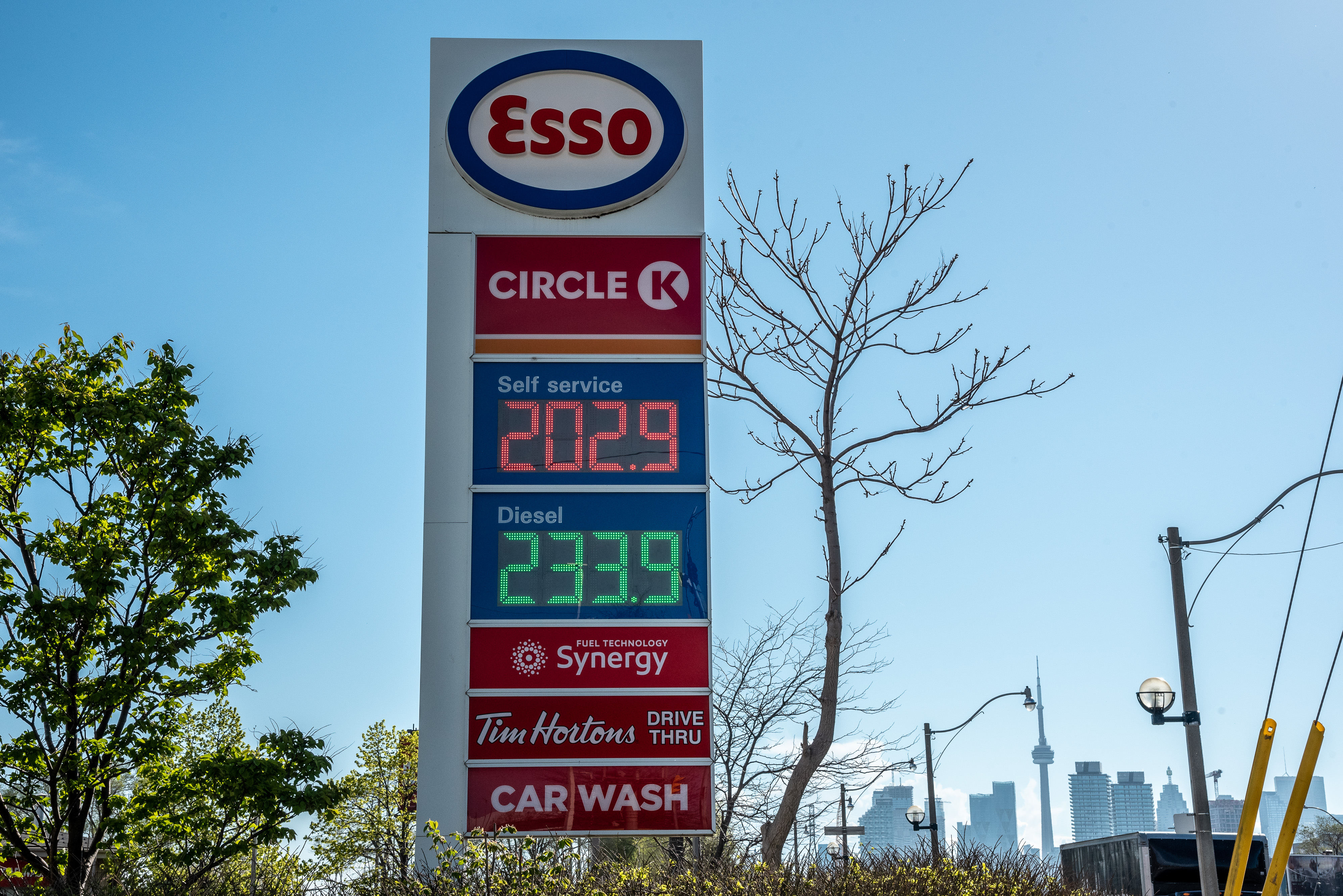
Global – VOR News Image
Some economists expect gas prices to rise further.
Lipow believes the national average will reach $3.75 per gallon this year.
Still, that would be lower than last year’s top of $3.88 per gallon in September.
“I’m not expecting a spike in gasoline prices,” Lipow added.
There are several reasons why gas prices are now holding steady.
First, oil prices have stopped rising. On April 12, US crude oil nearly reached $88 per barrel as investors braced for Iran’s reprisal against Israel over a suspected attack on an Iranian diplomatic complex in Syria.
However, oil prices fell when Israel and its allies effectively averted the reprisal. For now, fears of a larger confrontation in the Middle East have subsided, albeit this might alter quickly. US crude fell below $83 a barrel on Monday.
There are other seasonal aspects to consider.
The transition to more expensive summer-grade gasoline at US refineries is now complete. Similarly, the reopening of refineries that had been closed for normal maintenance has aided gasoline supplies.
Record-breaking US crude output continues to increase the oil supply. All of that US oil, headed by the Permian Basin in West Texas and New Mexico, is countering OPEC+’s production cuts, which Saudi Arabia and Russia lead.
Meanwhile, gasoline demand has remained relatively low despite other indications that American consumers are spending rapidly.

USA TODAY – VOR News Image
The Worst Could Be Over For Gas Prices This Spring
The hurricane season looms.
Gas prices are at risk of reaching a double peak. That’s what happened last year, when gas prices peaked in April, fell, and then returned late in the summer as excessive heat hampered US refineries.
“Weather can wreak havoc,” said Kloza, an OPIS analyst.
A major hurricane that destroys oil facilities along the US Gulf Coast is the greater risk.
Forecasters warn that the hurricane season (which normally begins on June 1) will be extremely active. Colorado State University predicts more hurricanes and named storms than ever before.
“Hurricane season is the next major hurdle,” Kloza stated.
SOURCE – (CNN)
-

 Politics5 months ago
Politics5 months agoUnveiling the Power and Influence of The Conservative Treehouse
-

 Sports4 months ago
Sports4 months agoSaints’ Aggressive Play-Calling Ends Up Coming Back To Hurt Them In Loss To Rams
-
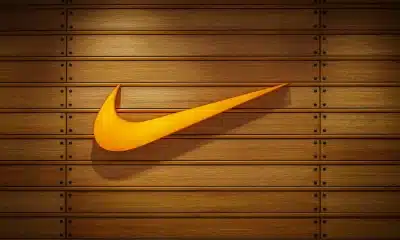
 Business4 months ago
Business4 months agoNike Says It Will Cut $2 Billion In Costs In A Major Warning For Consumers
-

 News5 months ago
News5 months agoThe Intersection of Adult Video Sites and Modern Liberalism
-

 Tech5 months ago
Tech5 months agoWhat is Proprietary Technology: Understanding Definition, Examples, and Advantages
-
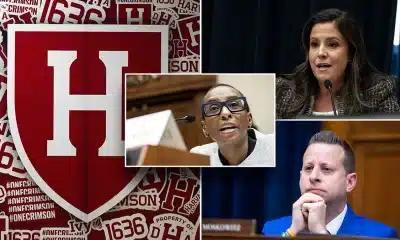
 Politics5 months ago
Politics5 months agoClaudine Gay: Harvard President Won’t Lose Job Over Congress Row




